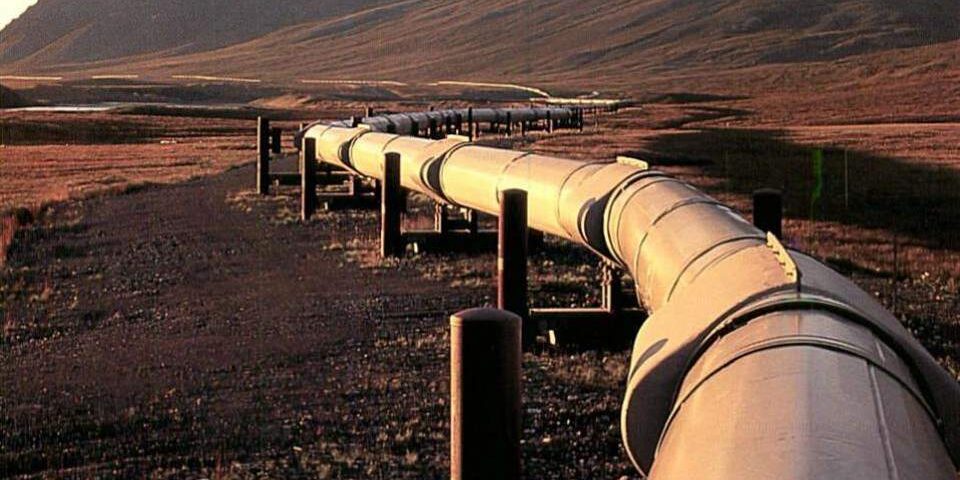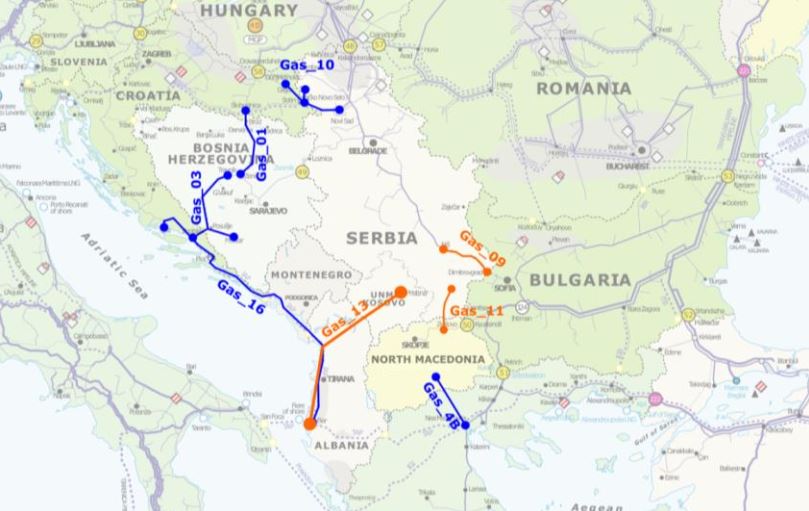The energy projects proposed by the Energy Community countries for priority status, including privileged access to public funds, have now passed the evaluation stage, expecting a final decision by the year’s end. On the bright side, at least two megalomaniac projects were dropped. On the dark one, the remaining projects floor the gas pedal.
Ioana Ciută, Energy coordinator | 28 July 2020

At the end of April, Bankwatch published its comments to the list of Projects of Energy Community Interest (PECIs), and Projects of Mutual Interest (PMIs), as part of a consultation process organised by the Energy Community Secretariat. We highlighted then that over three quarters of the projects presented were fossil fuels with costs estimated at EUR 8.5 billion. Greenlighting these projects would undermine any efforts to decarbonise the EU neighbouring countries’ energy sectors by 2050, and would also pose a real risk of becoming stranded assets.
After the evaluation, five gas projects and two electricity interconnectors have been dropped from the list. Still, the list of projects passing evaluation is dominated by fossil fuels projects – 12 gas and 2 oil projects ones, out of a total of 17.
The non-binding list of PMIs, energy projects that involve EU member states, is now expecting the European Commission’s recommendation. The PECIs list is expected to be approved by the Energy Community’s governing body, the Ministerial Council, at its 27 November meeting, upon the European Commission’s proposal.
Mega projects, mega investment risks. Best avoided.
Two of the projects that have not passed evaluation are White Stream gas pipeline and the Black Sea undersea electricity cable, both connecting Georgia to Romania. The former consisted of new cross-Black Sea infrastructure which would transport gas from Turkmenistan, via the second string of the Trans-Caspian (TCP) and expanded South-Caspian (SCP) pipelines in Georgia, to Romania and further to other EU Member States.
There is very little information available regarding the Black Sea undersea cable from Georgia to Romania, but we can make an educated guess and say that most likely the soaring investment costs outweigh the benefits.
The rest of the projects that haven’t passed evaluation are less megalomaniac, and refer to gas interconnectors between Romania and Serbia; Ukraine, Moldova and Romania, and electricity interconnectors between Serbia and Romania, and Croatia and Bosnia and Herzegovina.
Other harmful projects which did get the green light
There are, however, many other projects that did pass the evaluation, even if they’re not aligned with the EU’s long term decarbonisation goal.
The Albania-Kosovo interconnector, compressor station and internal gas pipeline, for one, is the exact opposite of decarbonisation. So far, gas has made up a relatively small percentage of Kosovo’s energy mix, and this project could make the country more dependent on this fossil fuel. Importing more electricity from Albania, where hydropower is the main source, could help cut Kosovo’s energy related emissions. In addition, Kosovo has very high potential for reducing energy losses, and high potential for renewable energy sources. Investing public resources in gasification at this point would crowd out investments in other urgent priorities such as reducing distribution losses, insulating housing, heat pumps etc. and must be avoided.

Similarly, the Ionian-Adriatic Pipeline would facilitate gasification of Montenegro and Albania, which have until now not used significant amounts of gas. Both countries are in a strong position for leapfrogging towards decarbonisation because of small populations, high potential for reducing energy losses, high potential for renewables, and high shares of electricity generation from existing hydropower plants, which can balance intermittent renewables. The pipeline project’s own feasibility study concludes that it is questionably feasible and shows that it is in partial competition with the LNG terminal at Krk in Croatia, which is already under construction.

All three Energy Community countries involved in these two projects – Albania, Montenegro and Kosovo – seemed to be going in the right direction – Albania with no fossil fuels in their electricity mix, Montenegro having dropped plans to build a new coal unit at Pljevlja and Kosovo needing to make a leap of faith and not resurrect the Kosovo eRe coal project, but rather seek sustainable alternatives and cut current losses.
All this at a time when the European Green Deal highlights the importance of smart infrastructure in the transition to climate neutral economies. To get there, there will also be a need to review the regulatory framework for EU energy infrastructure, including the TEN-E Regulation1, that’s intended to facilitate a common energy network linking regions and Member States through modern and efficient infrastructure. This Regulation has also been transposed into the Energy Community acquis.
What next?
The European Commission should hold off making a proposal to the Ministerial Council of the Energy Community to approve the list of projects until the revised TEN-E Regulation is adopted on both the EU and the Energy Community levels. The Regulation guides Projects of Common Interest (PCIs) in the EU and PECIs and PMIs in the Energy Community countries.
The context for the public consultation on the TEN-E Regulation that ended a few weeks ago makes it very clear why this revision is needed: “Europe needs modern, clean, secure, future-proof and smart energy infrastructure to deliver the Green Deal. The revision of the guidelines for trans-European energy infrastructure aims to ensure EU energy infrastructure policy is consistent and aligned with the climate neutrality objective of the Green Deal. Our infrastructure framework needs to be revised to reflect new policy developments such as the accelerated take-up of renewable energy sources and ‘smart sector integration’, which links energy sectors to help them reduce carbon emissions.”
And there’s an important lesson for considering future energy projects for priority status. There are numerous voices, including from within the industry sector, that agree we need a shift in mindset on the PCI status. A new approach and definition to PCIs could genuinely help prioritize new forms of infrastructure projects that take into account the current needs and future trends in the European energy sector: digitalisation, consumer participation, decentralisation, system-market interactions, and that integrate innovative solutions. The curtain is closing on the age of mega pipelines.
On the EU level the PCIs list was approved already, but not before prompting the EU Ombudsman to look into whether the European Commission has committed maladministration in failing to ensure an adequate climate impact assessment for fossil fuel projects already listed as PCIs So it is not too late for the Energy Community to avoid new, costly infrastructure that effectively hampers the continent’s decarbonisation goal .
These projects should be evaluated based on their lifecycle greenhouse gas emissions, not merely as replacement capacity for more polluting fuels. This is of particular importance as estimates of exactly how much natural gas contributes to climate change are continuously being revised upwards and depend on the Global Warming Potential assigned to methane as well as on assumptions about the extent of fugitive emissions during gas extraction and transportation.
The Commission should do everything in its powers to not let the Energy Community countries fall into the same carbon traps that the EU is now struggling to pull itself out of.
1The TEN-E Regulation, which is the basis for the PECI projects as well, is part of the Connecting Europe Facility package of proposals, and sets out the conditions for identifying projects of common interest (PCIs) that will be eligible for EU funding under the Connecting Europe Facility and other instruments.
Never miss an update
We expose the risks of international public finance and bring critical updates from the ground – straight to your inbox.
Theme: decarbonisation
Project: Coal in the Balkans
Tags: BalkanCoal | Western Balkans | coal | consultations-eu-funds | decarbonisation | fossil fuels
